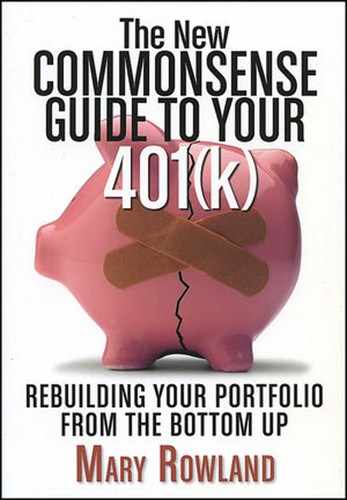REVIEWING AND REPOSITIONING your investment portfolio for retirement—or transition—is a key part of your preparation for change. You have saved throughout your working years. Now you must take stock and see if you have what you need to last the remainder of your lifetime and, if not, what you might do about it.
When you think about your investment portfolio, think about all your assets—everything we've just been talking about in calculation of net worth. That includes your personal residence, a second home if you have one, a family business, the money in all your retirement plans, and the assets you have outside your retirement accounts. Look at the balance sheet you've just prepared as a start.
Your balance sheet provides a list of your assets. But you want to see what your portfolio looks like—or how those assets are grouped by investment category. Roger Gibson, an investment manager in Pittsburgh, has written what many experts consider the bible of asset allocation, Asset Allocation: Balancing Financial Risk (McGraw-Hill, 2007), which discusses how diversification limits investing risk. Gibson suggests that you divide your assets into two broad categories. The first is those that produce income such as bonds, money market funds, and Treasury bills. Include here any benefit that you will receive from a traditional pension plan or a defined benefit plan. That represents a fixed income because the monthly benefit is fixed.
The second is investments that represent ownership or equity. That includes stocks, as well as real estate that you own directly, be it your residence, vacation home, or investment property, and any other ownership investments, such as a family business if you have one.
How do you decide how to allocate these assets? William G. Droms, a professor of finance at Georgetown University and a popular speaker on this topic, devised a shorthand method. Value the seven statements below on a scale of 1 to 5, with 1 being "strongly disagree," and 5 being "strongly agree." Then add up your points.
I would like to earn a high, long-term total return that will allow my capital to grow faster than the inflation rate; this is one of my most important investment objectives.
I would like an investment that provides me with an opportunity to defer taxation of capital gains and/or interest to future years.
I do not require a high level of current income from my investments.
My major investment goals are relatively long-term.
I am willing to tolerate sharp up-and-down swings in the return on my investments in order to seek a higher return than would be expected from more stable investments.
I am willing to risk a short-term loss in return for a potentially higher rate of return in the long run.
I am financially able to accept a low level of liquidity in my investment portfolio.
Depending on how you scored, here are Droms' recommendations on what percentage of assets to put into each sort of investment.
Financial planners like Droms' test because it acknowledges the different tugs and pulls on investments and comes up with a neat score to determine asset allocation. "It's the best test I've seen," says Harold Evensky, a financial advisor in Coral Gables, Florida.
